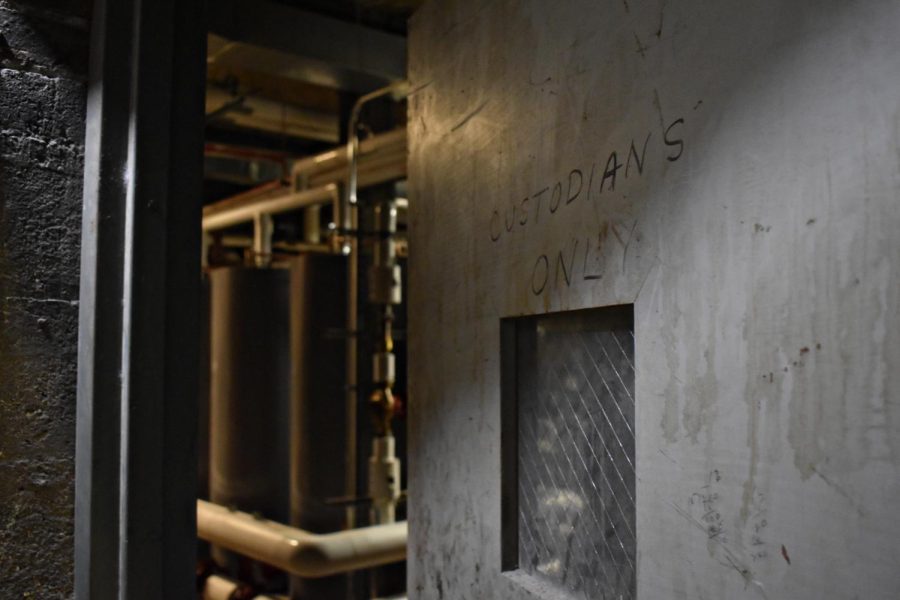Photo Essay: The backrooms of WCCHS (part I)
Photo by Victor Correa
This behind-the-scenes tour of West Chicago Community High School’s backrooms takes students and staff where they have never been before.
April 10, 2023
In the confines of the West Chicago Community High School lay vast hallways of endless pipes, doorways, and even more backrooms beyond those doors. This two-part photo essay unveils the rooms in the high school which are hidden beyond the public eye.
The online phenomenon of “The Backrooms” appeals to the eerie simplicity in liminal spaces – such as hallways or other places utilized for transitory purposes – which almost every building has; however, these places are hidden away from people as they often contain mechanical-related machinery, which can be dangerous.
Luckily, the backrooms of West Chicago Community High School are documented here, through photography.
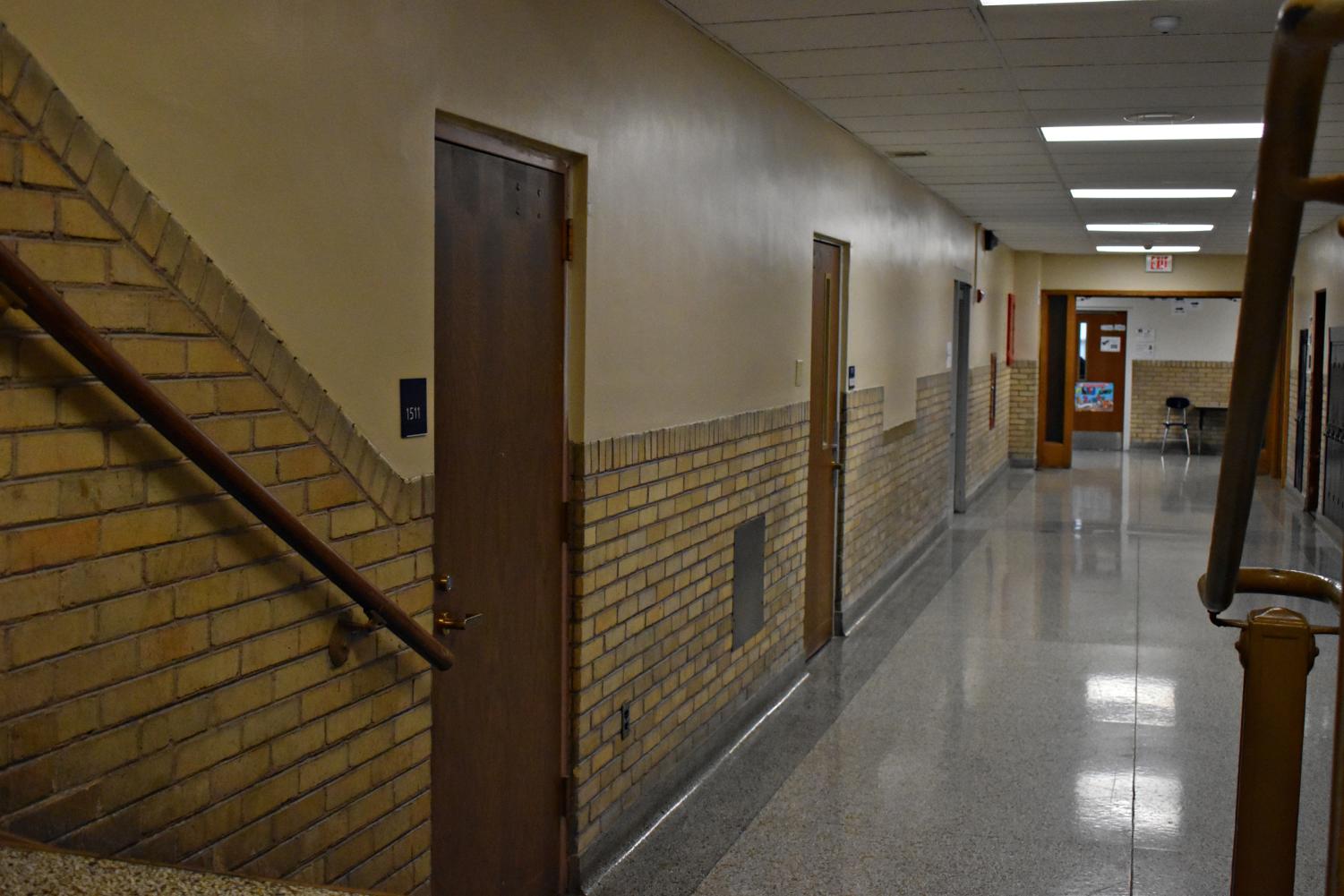
One of the doors to the school’s basement is located in the oldest part of the building, in the hallways leading up to the child development class (as shown in the photo), not too far away from Entrance F. This part of the building is aligned with old, finished brick and light brown/tan colors, a testament to how long these walls have stood. The door to the old basement requires a key to access it: English teachers Brian Turnbaugh and David Jennings provided access to document what lies underneath students’ and staff’s feet day to day.
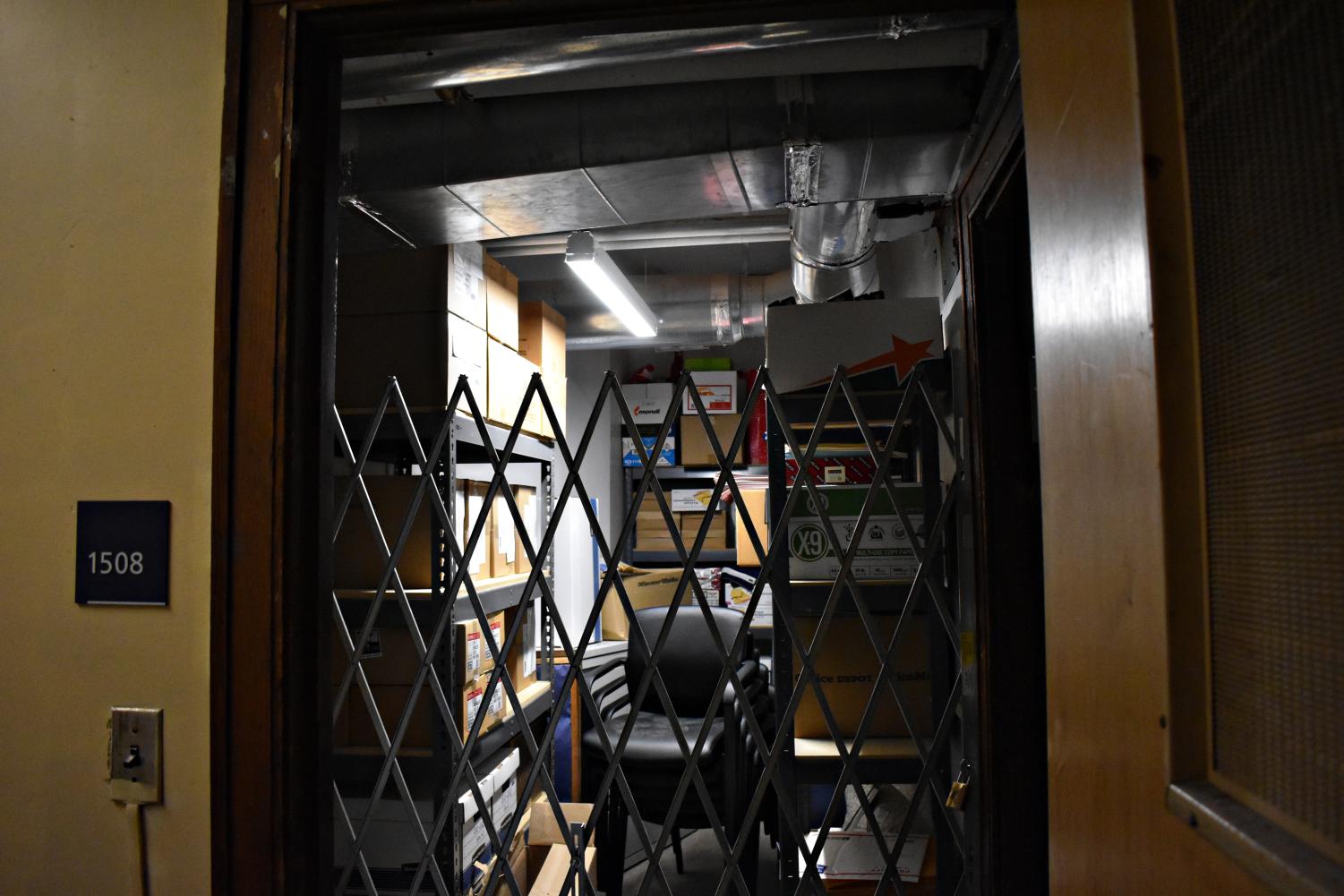
Upon entering the door, there is a staircase with the room number 1508 marked beside it. These numbers are placed in the building to assist people with directions in locating a classroom; throughout the basement, these room numbers are still present, despite being underneath the building and away from the public eye.
When opening the door, a gate appears across a narrow hallway which leads left and right. Behind the gate are shelves of boxes and a singular stack of chairs underneath a light.
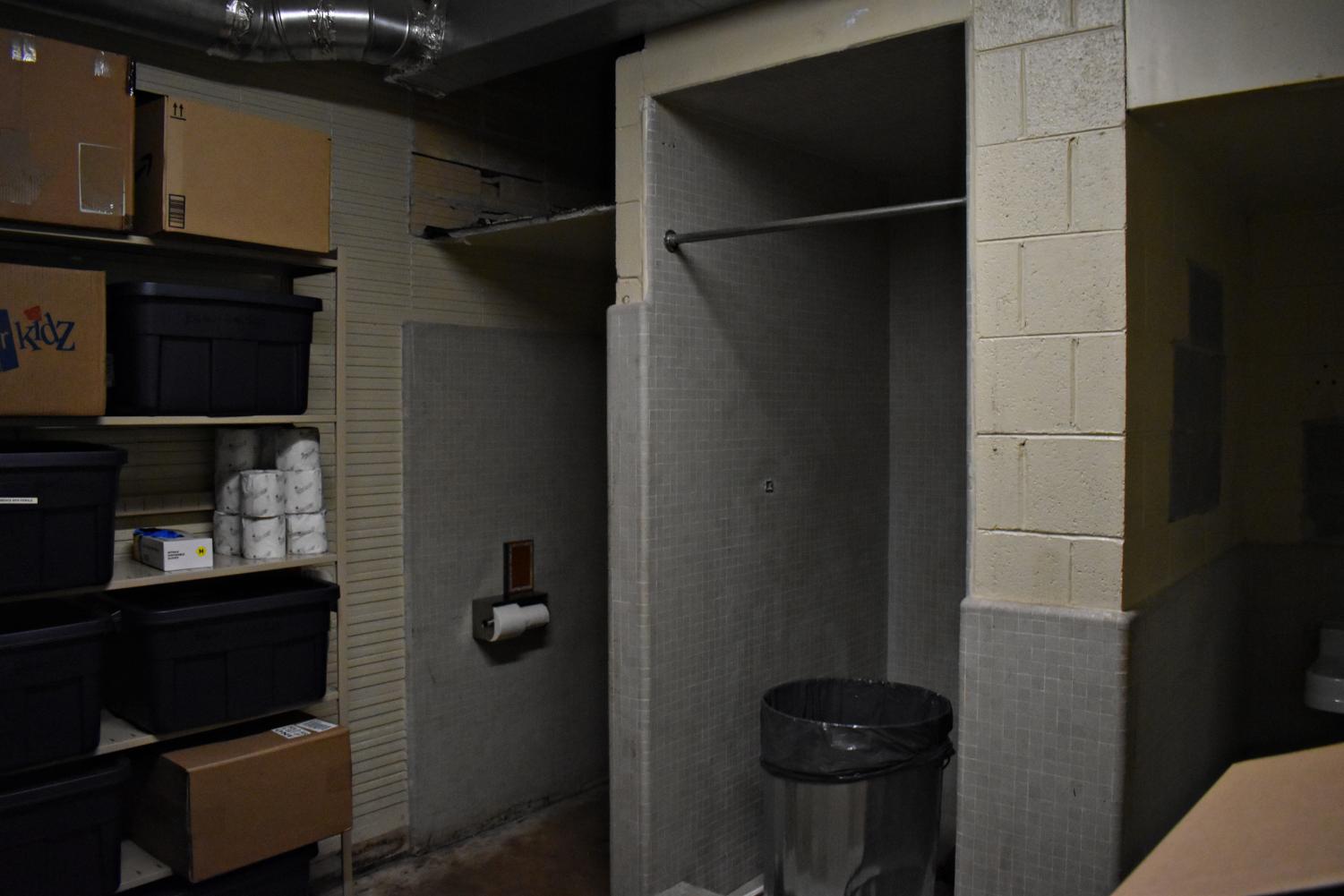
Walking into the narrow hallway, to the left is a functional bathroom. Stacks of boxes (as shown in the photo) line the left side of the room, accompanied by many rolls of toilet paper. To the far right is a sink with a mirror placed near the side of the sink. Where the trash can is placed is a shower and the furthest corner is home to a toilet. A book rests on top of the toilet paper dispenser for some light reading.
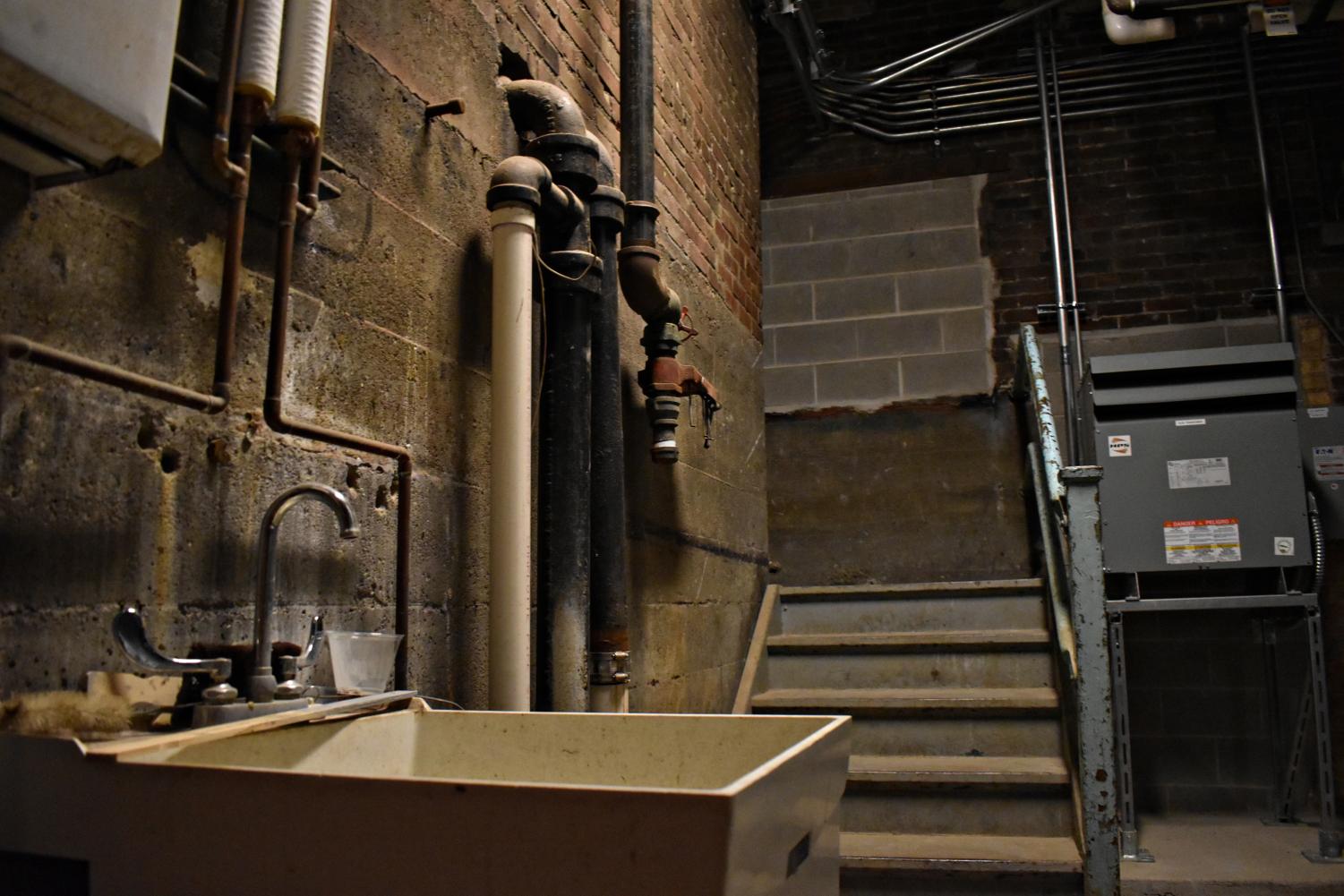
Backtracking through the narrow hallway (to the right point of view from the second image), sits a staircase which ascends into an even tighter hallway. Large and small pipes zigzag throughout the place along with a huge wall (to the left) of a metallic room.
There is an unmistakable musty scent present from this point forward.
Paint is splattered messily on the steps just as it peels off from pieces of metal, exposing a rustic tone on the staircase.
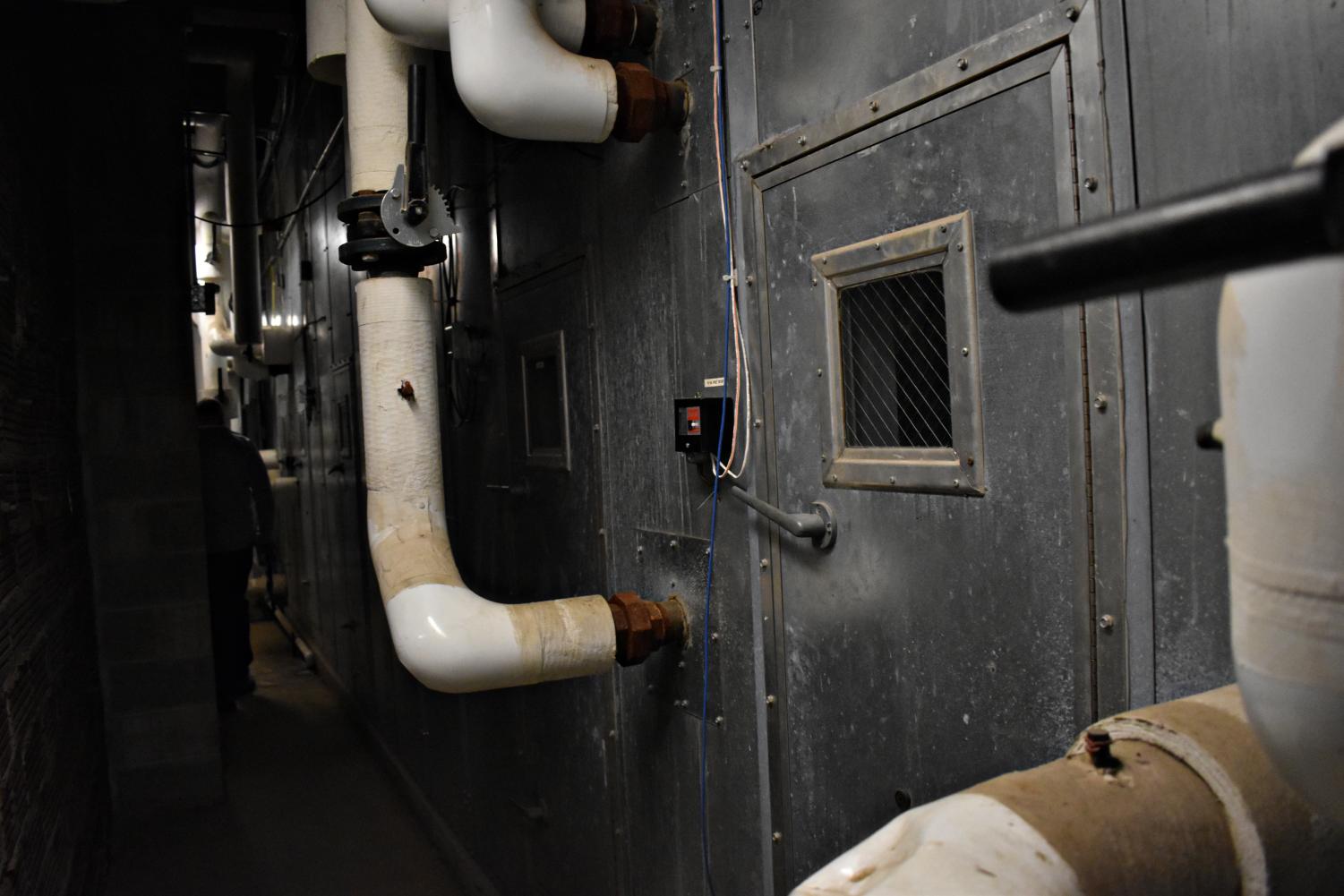
Further down in the hallway, there is a door to the right which muffles loud noises of a sort of gas pressure.
To the left, is a huge room full of shelves, piping/mechanical related things, and even more rooms.
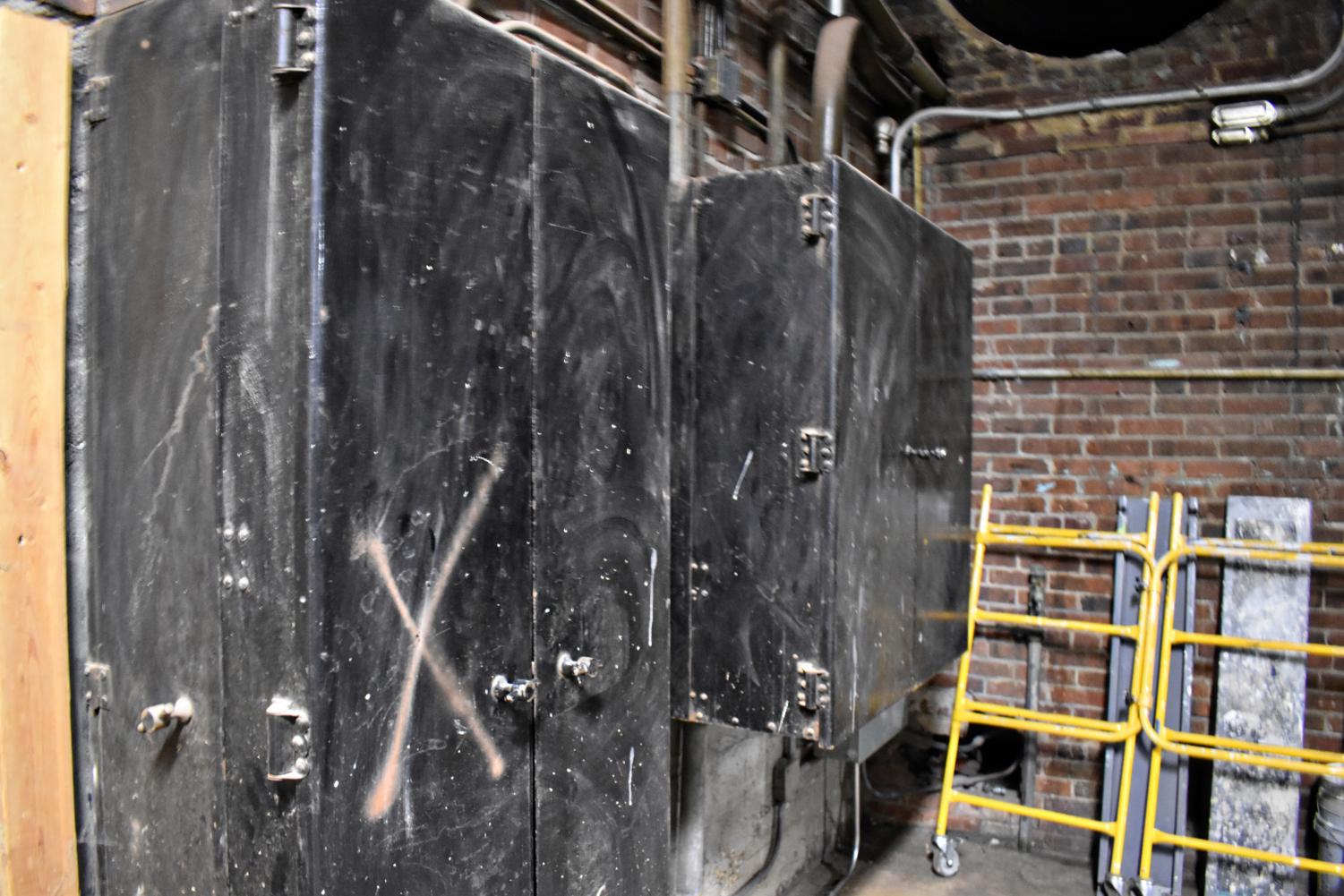
This larger room allows for more walking space instead of the claustrophobic halls shown previously. The room is made of brick, which is old, faded, and dirty. Shown here are two storage closets and a small wall with an exposed hole. The wall itself is peculiar, as it does not extend long enough to form an entire room; rather, it only extends a couple of feet.
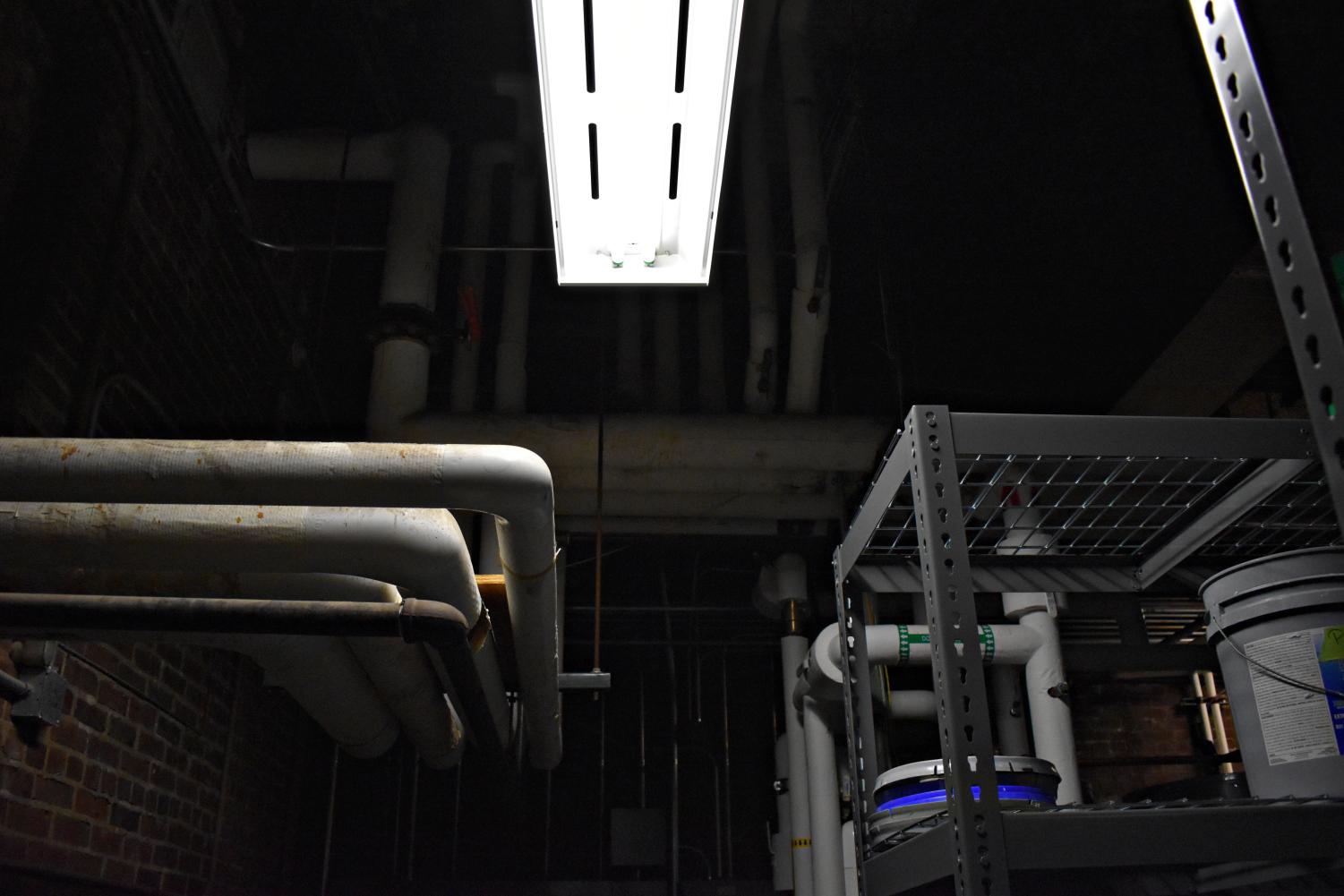
Despite the previous photo appearing to be brighter, this is a misguidance by the fault of the camera. Above, the lighting which is to be found in this room and the previous hallway is embodied. The basement is dark, and the lights dimly illuminate the area, although the glow is sufficient to make out details of objects at a slightly-medium range from one’s perspective.
This room, in particular, lies directly beneath the auditorium seats, so every time someone goes to see a play or a concert at the auditorium, directly beneath them is an endless labyrinth of pipes.
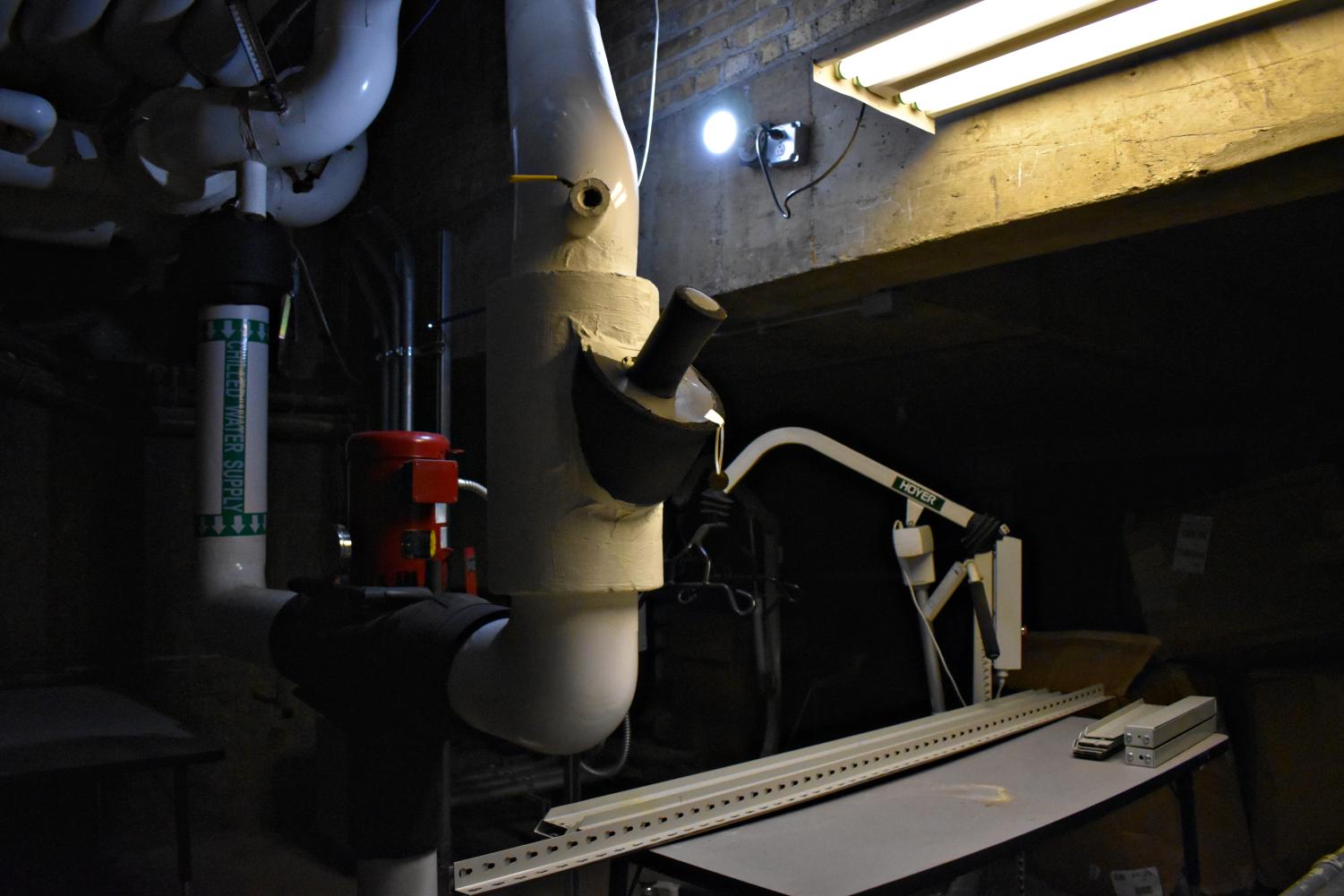
Along the furthest end of the room (across from the entrance) lies lots of – well – junk. The space is littered with empty boxes, small pieces of construction materials, tables, and chairs. This scene was described by Turnbaugh as “an operating table.”
The view here is especially dark considering these are the only two lights in this part of the room.

Moving to the right of the room, the lighting is more generous as it glows off jagged brick. This specific area is dimly-lit by red-brownish colors, and is more spacious in comparison to the darker shadows and tighter spaces. These stairs follow into another hallway.
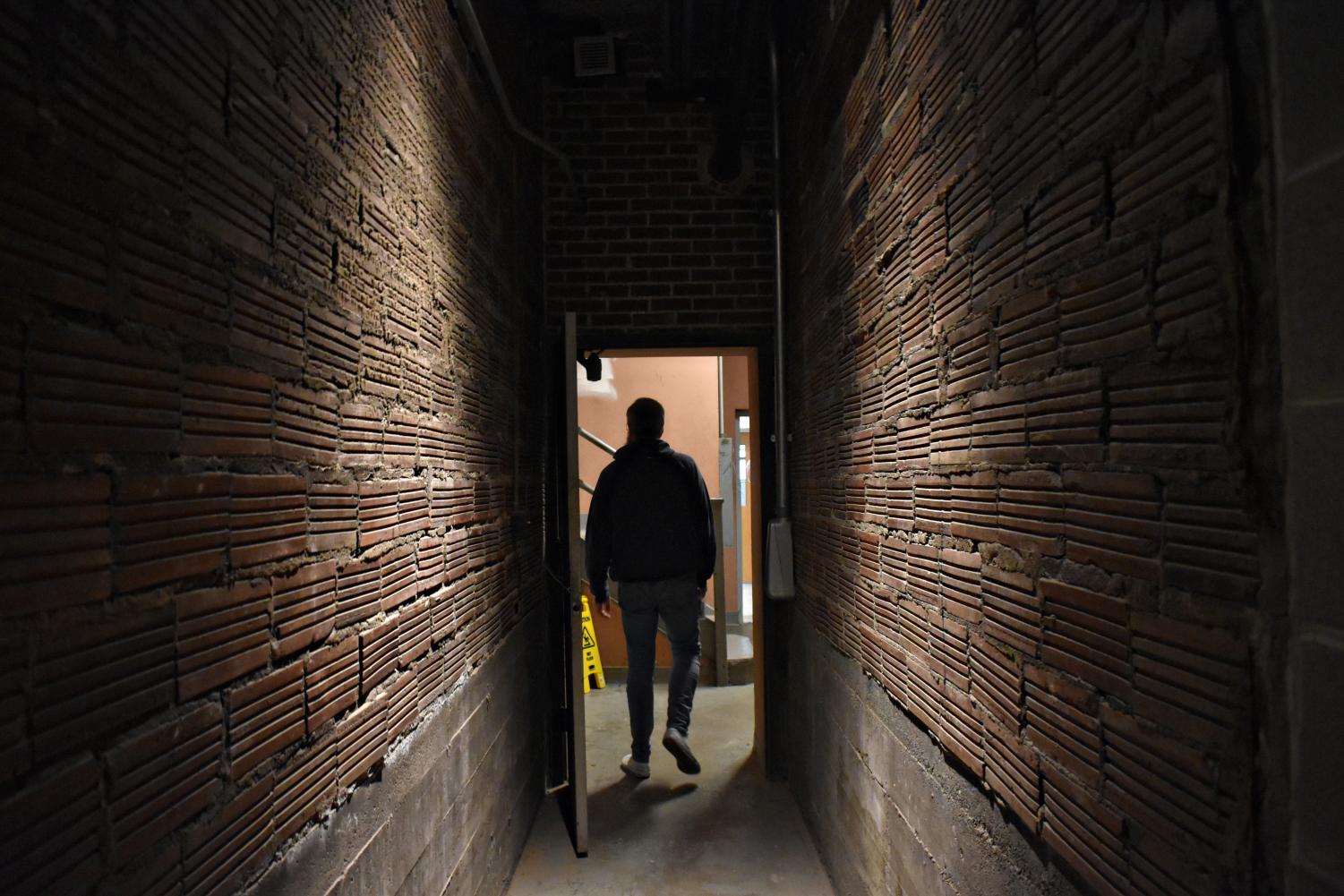
Jennings leads the way up the stairs and into a dim, liminal space which is built of even more brick. Unlike the finishing that is applied to bricks on the surface, these are unapologetically rough, evident by their jagged, sharp-like edges. The room ahead has a small staircase of which heads up to a platform consisting of two doors.
To the right of the room are shelves which store props for theater programs.
As shown throughout all the photos, paint is peeling off the metal and corroded brick, creating rustic tones, claustrophobic spaces, and an overall eerie atmosphere.
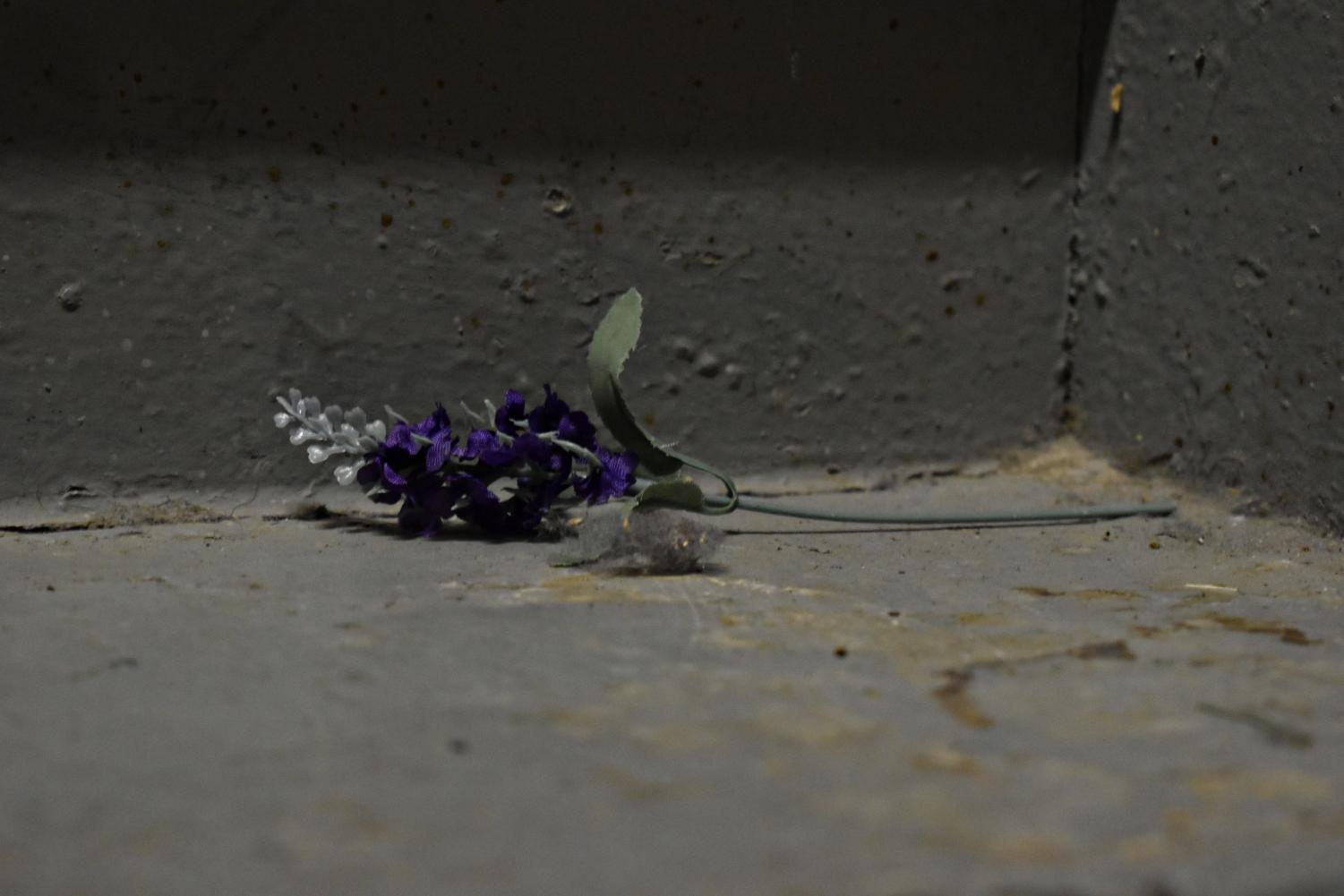
However, in the midst of all that decay, on the small case of steps, lies a singular prop of a purple flower. Its colors contrast in vibrance with the hard, cold concrete.
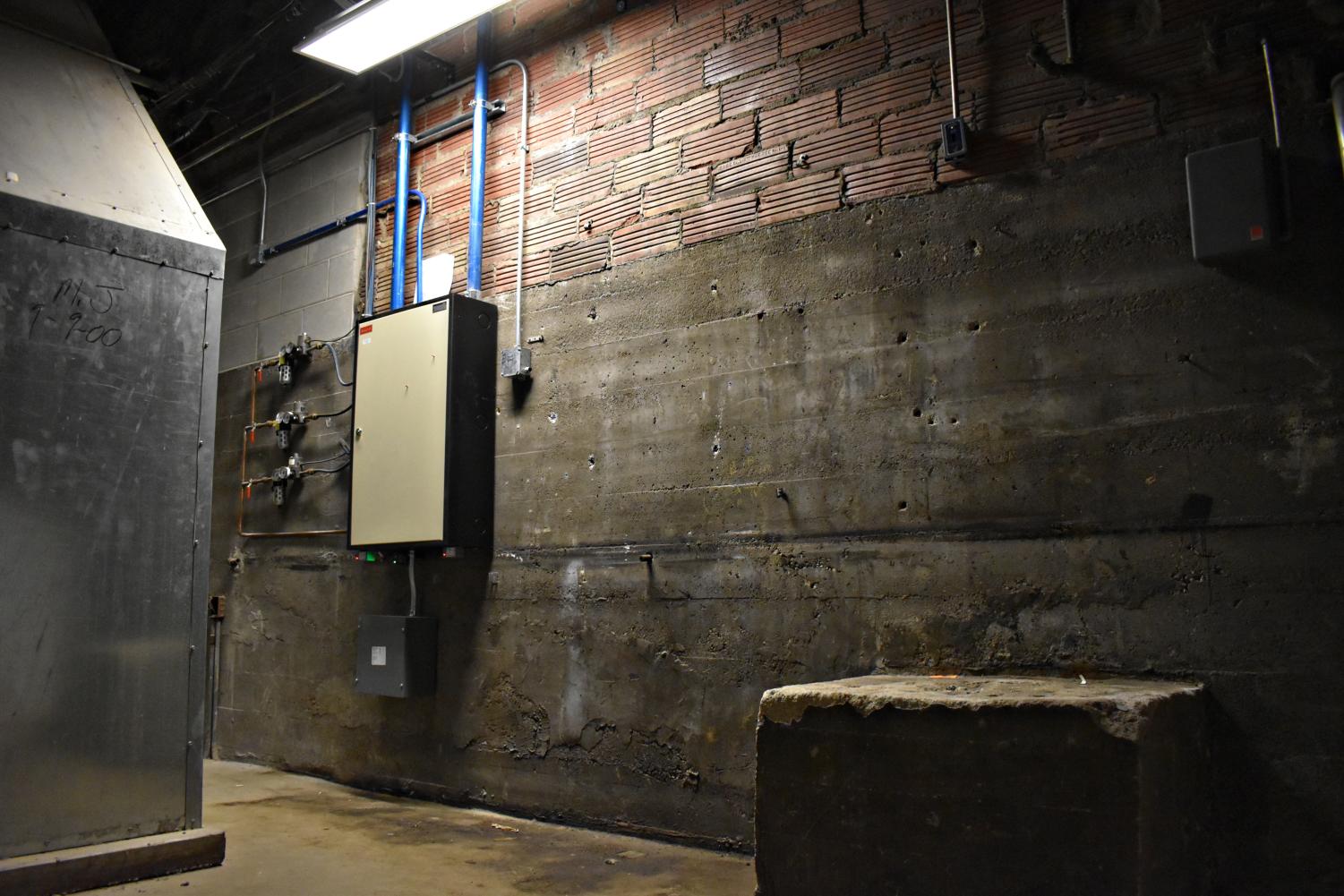
Backtracking into the tight hall of pipes, all the way down, is a small, empty space which consists of…absolutely nothing. It is so dark in this space, the camera is unable to pick up many photos; the only image possible is a shot from a dark corner, pointing towards the hallway.
This room consists of a singular block of cement, which Turnbaugh speculated “appears like a torture chamber.”
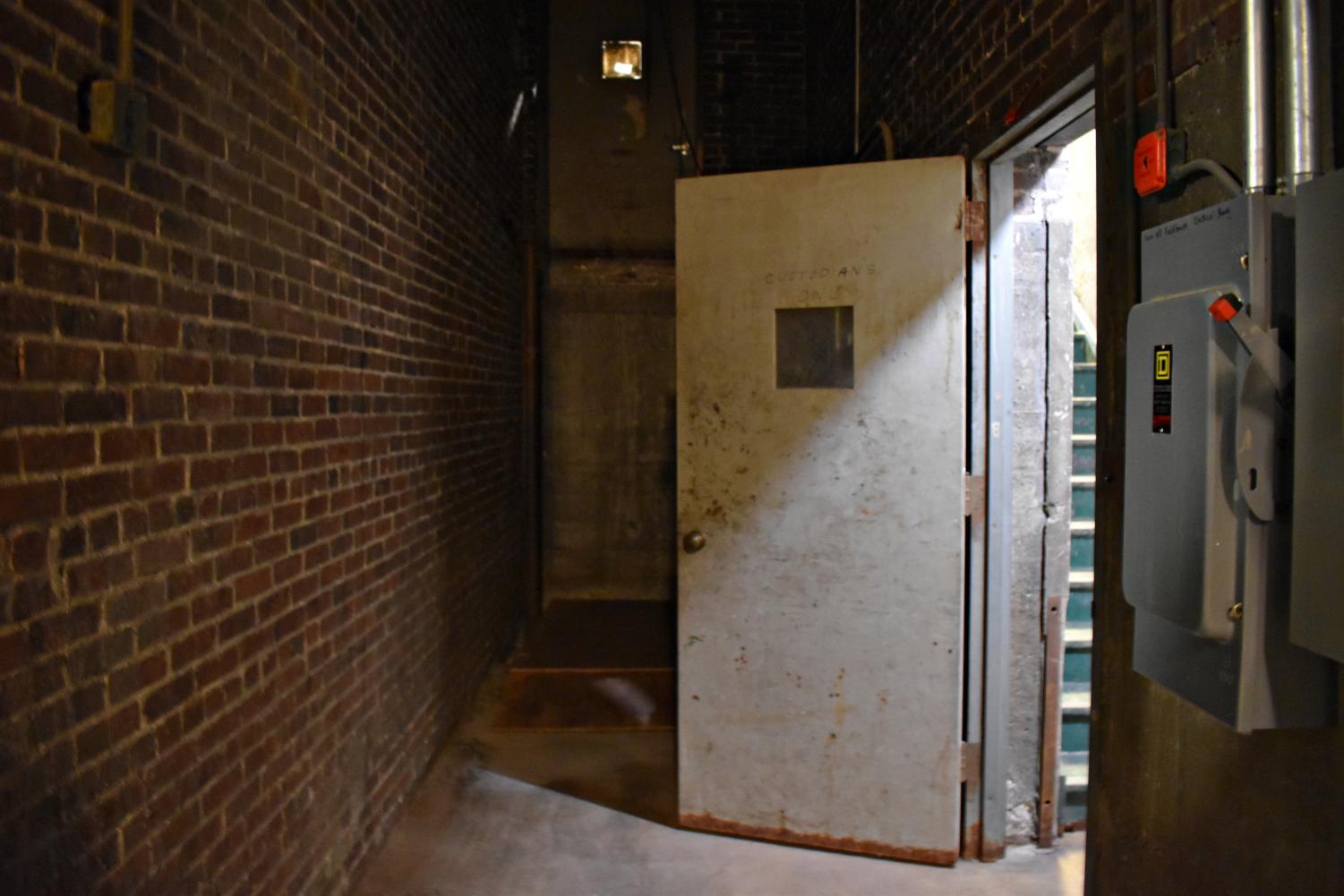
The exit awaits behind a heavy rustic metal door.
Just above is actually another door – but there is no staircase. To the side of the floating door are chains and hooks which might be some pulley system. What this means is that, somewhere in the building, there is a door and behind that door may be a straight drop.
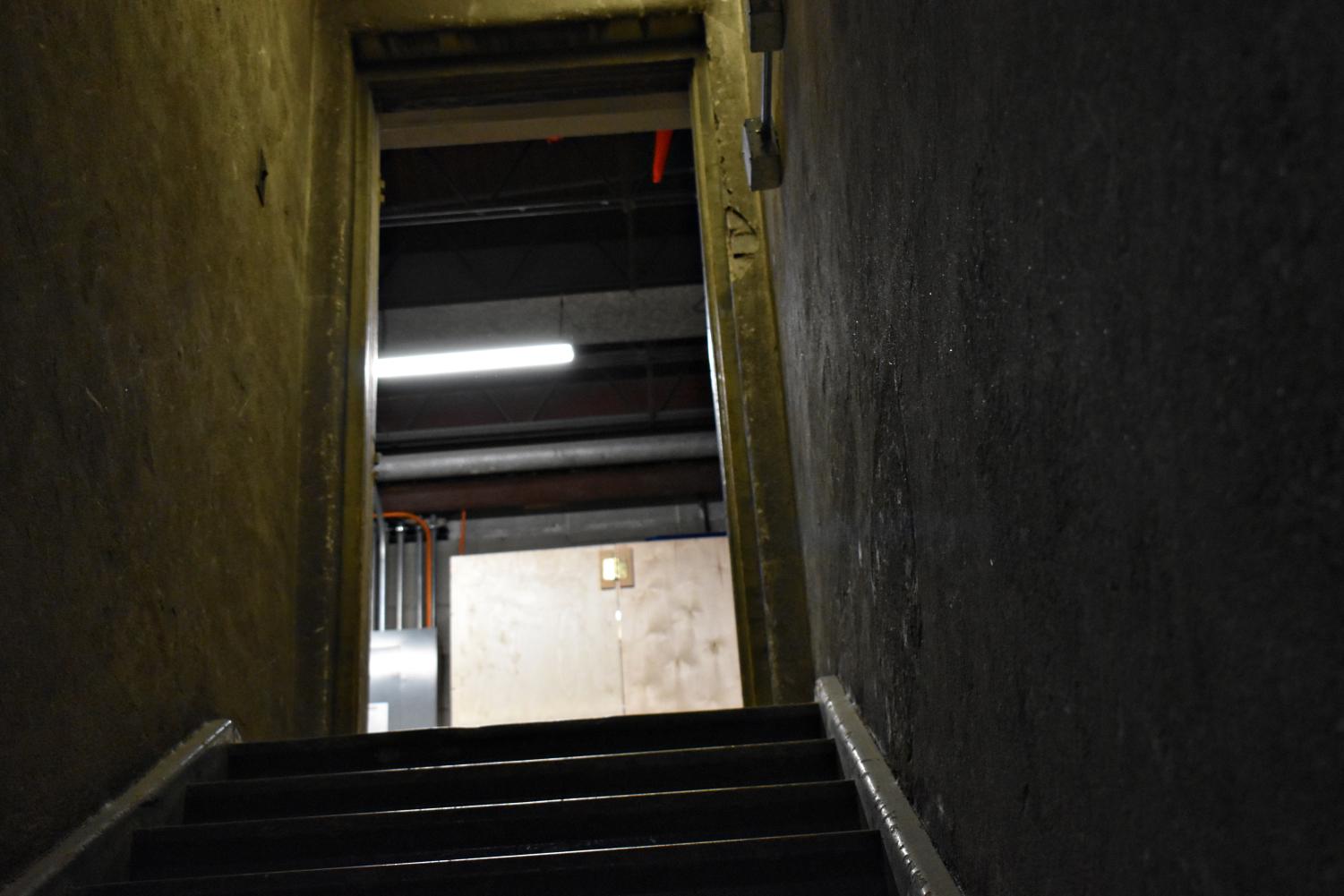
Exiting the basement, the walls are full of scratches and scrapes. The door frame’s concrete is broken off. This scene may be reminiscent of the video games such as “Resident Evil 7” and “P.T.”, which convey the same dirty, barren atmosphere this exit exerts.
The top of the stairs leads to a room of mechanical and electrical systems which then spills into the hallways of the school.
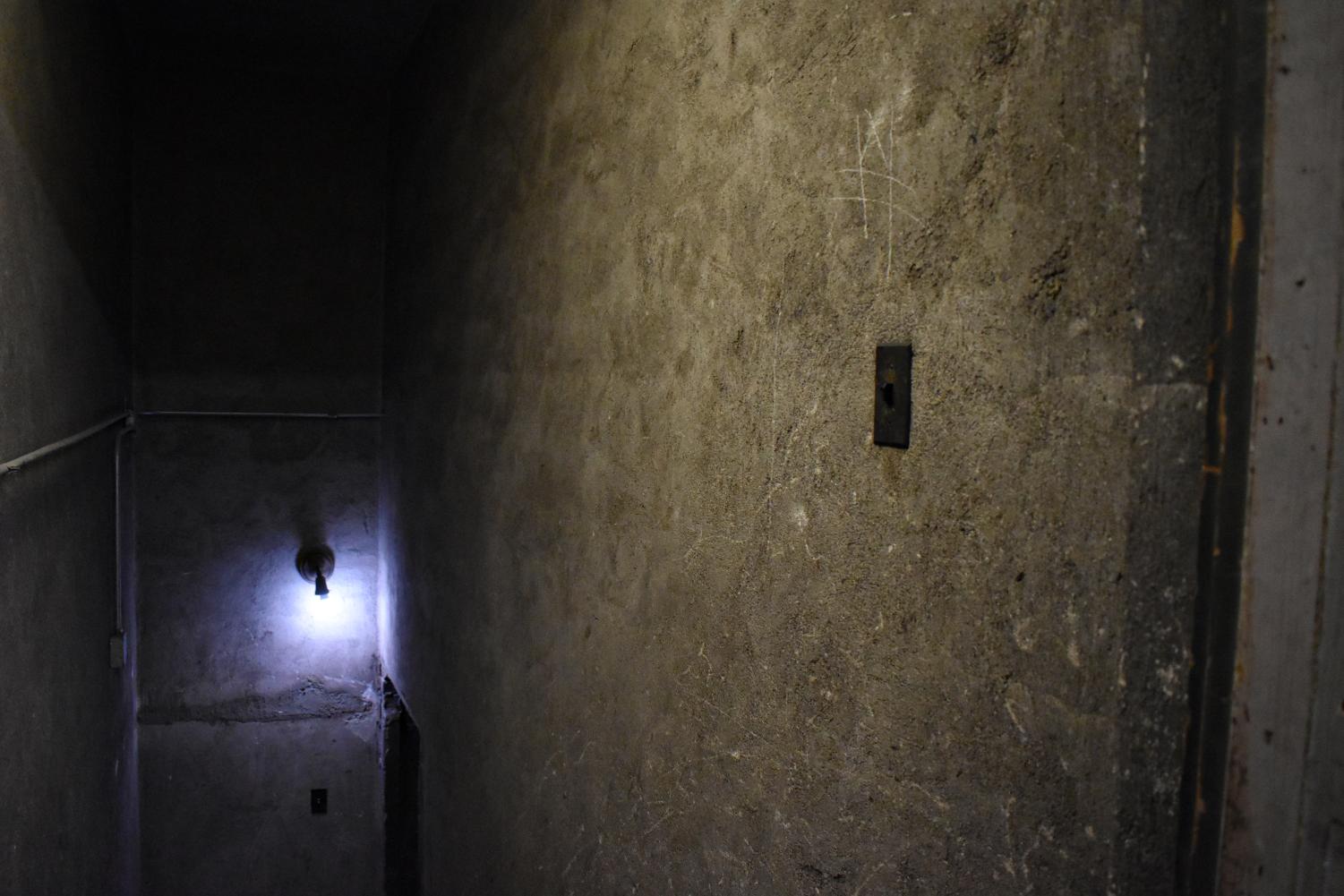
There is only one singular light in the staircase. Etched above the top of the switch, someone started a game of tic-tac-toe.
Someone is yet to respond.



